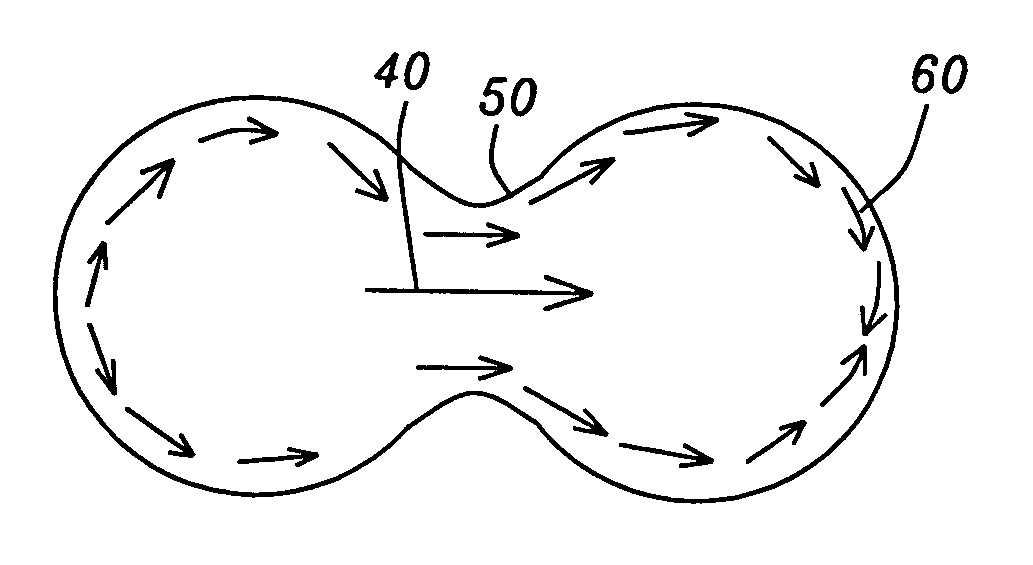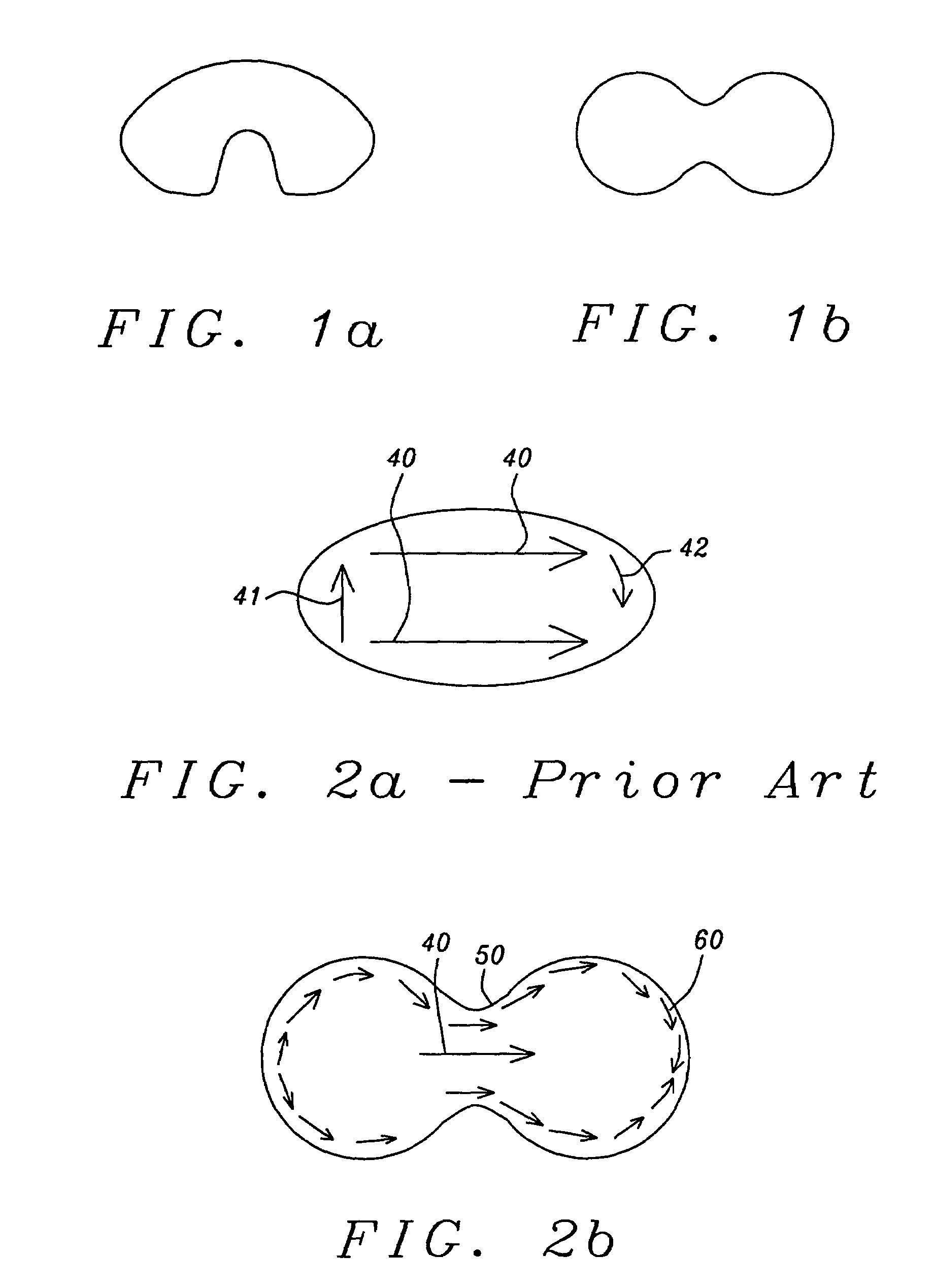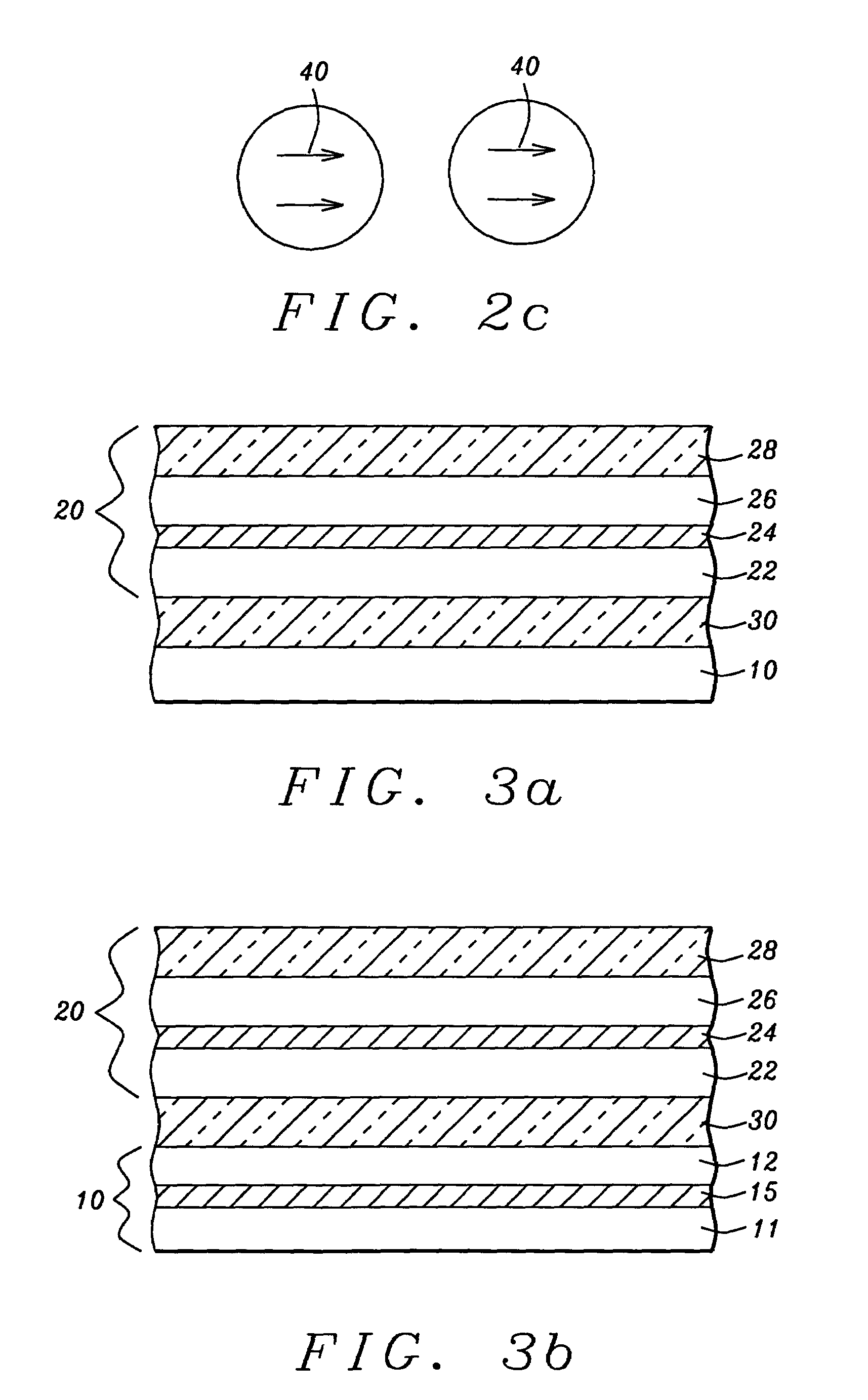Magnetic random access memory designs with controlled magnetic switching mechanism
a random access memory and magnetic switching technology, applied in the direction of digital storage, instruments, semiconductor devices, etc., can solve the problems of requiring high current to change the magnetization direction of the mtj for the purpose of storing data, uncontrollable edge fields, adverse effects on the storage and reading of data, etc., to reduce the probability, control the problem, and reduce the effect of edge effects
- Summary
- Abstract
- Description
- Claims
- Application Information
AI Technical Summary
Benefits of technology
Problems solved by technology
Method used
Image
Examples
Embodiment Construction
[0024]The preferred embodiment of the present invention teaches a method of forming an individual MTJ memory cell or an MRAM array of such cells, wherein individual MTJ cells are shaped so as to have their narrowest dimension at their middle regions. An array of such cells thereby has a structure and design that provides a lowered threshold for state switching and a uniformity of coercivity across the array. The design offers at least the following three advantages: 1) a reduction of the switching field threshold dependence on individual cell geometry; 2) a preferred path of switching which is a fanning mode, wherein the ends of the magnetization vectors of individual segments are coupled at the segment edges; 3) artificial nucleation sites produced by segmentation and shape narrowing which provide significantly lower switching thresholds than the uncontrollable edge and shape defects common to unsegmented cells with prior art shapes.
[0025]Referring first to FIGS. 1a and b, there is...
PUM
 Login to View More
Login to View More Abstract
Description
Claims
Application Information
 Login to View More
Login to View More - R&D
- Intellectual Property
- Life Sciences
- Materials
- Tech Scout
- Unparalleled Data Quality
- Higher Quality Content
- 60% Fewer Hallucinations
Browse by: Latest US Patents, China's latest patents, Technical Efficacy Thesaurus, Application Domain, Technology Topic, Popular Technical Reports.
© 2025 PatSnap. All rights reserved.Legal|Privacy policy|Modern Slavery Act Transparency Statement|Sitemap|About US| Contact US: help@patsnap.com



